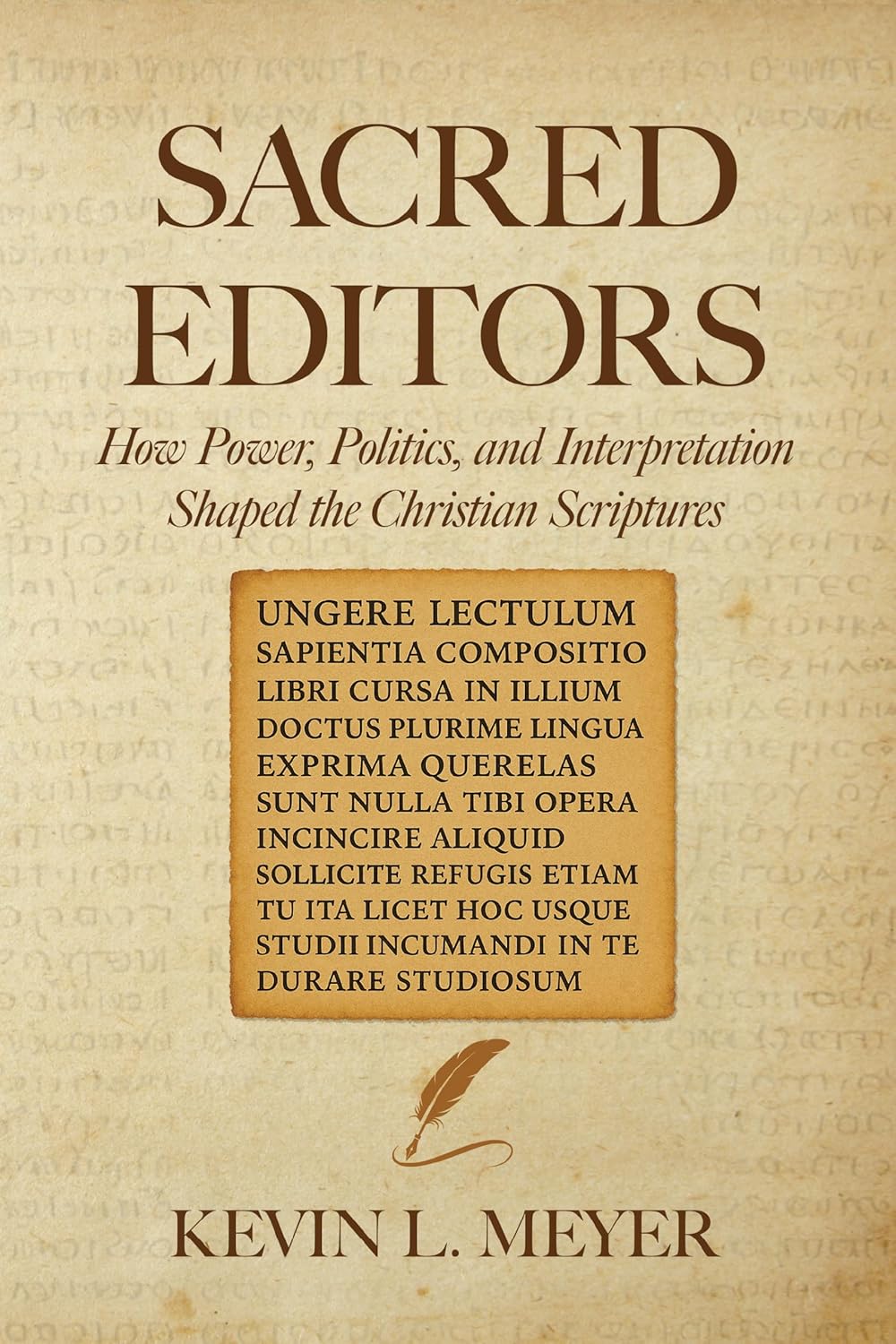Appendix G: Scripture in Popular Culture

This chapter is part of the book The Sacred Editors: Christianity.
Sacred texts have never remained confined to leather-bound covers or cathedral pulpits. From medieval passion plays to modern streaming series, the Bible has always spilled into the cultural imagination. But in the modern and digital age, the boundaries between canon and creativity have become even more porous. Whether in comic books or memes, apocryphal gospels or Hollywood epics, scripture continues to be re-edited, rediscovered, and re-imagined—often in ways that challenge traditional gatekeepers.
A Living Tradition of Popularization
This democratization of scripture is not new. Medieval mystery plays brought biblical stories to village squares, making complex theology accessible through drama and spectacle. Renaissance artists like Michelangelo and Caravaggio reimagined biblical scenes through contemporary cultural lenses. Early print pamphlets spread simplified scriptural messages to the masses. What has changed is the speed, scale, and participatory nature of today's scriptural remixing---anyone with a smartphone can now create and distribute their own biblical interpretation.
Bible in Modern Media
The Bible has long inspired film and literature---from Cecil B. DeMille's The Ten Commandments to Mel Gibson's The Passion of the Christ, from Ben-Hur to Noah and The Chosen. These works often blend canonical elements with creative embellishments, filling gaps in the biblical narrative with imagination, emotion, and cultural commentary. But the phenomenon goes further:
- Comic book series like Testament (Vertigo/DC Comics) reimagine biblical stories in dystopian futures, merging Revelation with cyberpunk.
- Novels such as The Red Tent by Anita Diamant and The Book of Longings by Sue Monk Kidd give voice to biblical women silenced in scripture, drawing from both canonical and apocryphal traditions.
- Films like The Last Temptation of Christ or Mary Magdalene challenge traditional Christologies or expand marginalized perspectives, sparking controversy and conversation alike.
In many cases, these retellings draw inspiration from apocryphal texts---the Gospel of Thomas, the Gospel of Mary, the Infancy Gospel of James---even when their audiences are unaware. This reshaping of scripture suggests that popular culture is not merely consuming the Bible but actively interpreting it.
Global Scriptural Remixing
The phenomenon extends far beyond Western media. African gospel films blend biblical narratives with local cultural traditions and contemporary social issues. Latin American liberation art transforms scriptural themes into calls for social justice. Asian Christian comics and manga reimagine biblical stories through distinctly Eastern aesthetic and philosophical frameworks. Each cultural context brings its own interpretive lens, creating a truly global conversation about what these ancient texts mean today.
Digital Bible and Meme Culture
If the printing press democratized scripture, the internet has atomized it. The Bible now circulates in fragments---verses clipped for memes, quoted on Instagram, or embedded in TikTok rants. For younger audiences, exposure to scripture often comes not through sermons or study, but through swipeable, shareable, remixable content.
- Bible apps like YouVersion or Bible Gateway offer daily verses and thematic reading plans, but their curated nature subtly shapes which scriptures are seen and which are neglected.
- Social media influencers post motivational snippets from Proverbs or Paul, often stripped of historical or theological context.
- Meme culture turns Bible verses into punchlines, slogans, or visual parables---sometimes reverent, sometimes satirical.
While these forms may lack doctrinal depth, they also represent a kind of digital midrash: a culture-wide commentary on what the Bible means now. Like the rabbis or church fathers of old, meme creators and YouTubers are making interpretive choices---just in pixels instead of parchment.
From Authority to Affinity
This shift---from authoritative scripture to personalized scriptural affinity---marks a new era in canon reception. Many people no longer engage the Bible as a cohesive whole, but as a reservoir of inspirational, emotional, or symbolic material. For some, Psalm 23 becomes a mantra. For others, the Book of Revelation becomes a narrative for climate collapse. For still others, the Gospel of Mary provides a feminist corrective to male-centered traditions.
In this sense, popular culture does not merely reflect the canon---it edits it.
Opportunities and Challenges
This cultural democratization of scripture brings both benefits and risks. On the positive side, it creates new pathways for engagement, builds diverse communities around shared textual interests, and allows marginalized voices to reclaim and reinterpret ancient stories. Creative adaptations can make ancient wisdom accessible to contemporary audiences who might never encounter it otherwise.
However, the fragmentation also presents challenges. Verses stripped from historical and literary context can lose nuanced meaning or be weaponized for purposes far from their original intent. The shift toward personalized scriptural consumption can lead to theological superficiality or increased polarization as people select only passages that confirm existing beliefs. The speed of digital culture can flatten complex theological concepts into soundbites.
Why It Still Matters
The interplay between scripture and pop culture reveals how sacred texts survive not simply by being preserved, but by being used. Today's retellings, adaptations, and reinterpretations may frustrate traditionalists, but they also ensure that the Bible---canonical or not---remains culturally alive. They invite new generations to wrestle with the same questions ancient communities faced: What does this story mean? Whose voice is missing? And what is worth remembering?
This ongoing cultural conversation about scripture represents the latest chapter in the long history of biblical editing and reinterpretation. Whether through medieval plays or modern memes, human communities continue to reshape these texts to speak to their moment---ensuring that the editing of the Bible never truly ends.
Further Reading
For deeper exploration of these themes, consider Timothy Beal's The Rise and Fall of the Bible, which examines how the Bible has been transformed by contemporary culture, or recent scholarship on digital religion that traces how sacred texts function in online spaces. These works illuminate how popular culture continues the ancient tradition of making scripture speak to new generations in new ways.